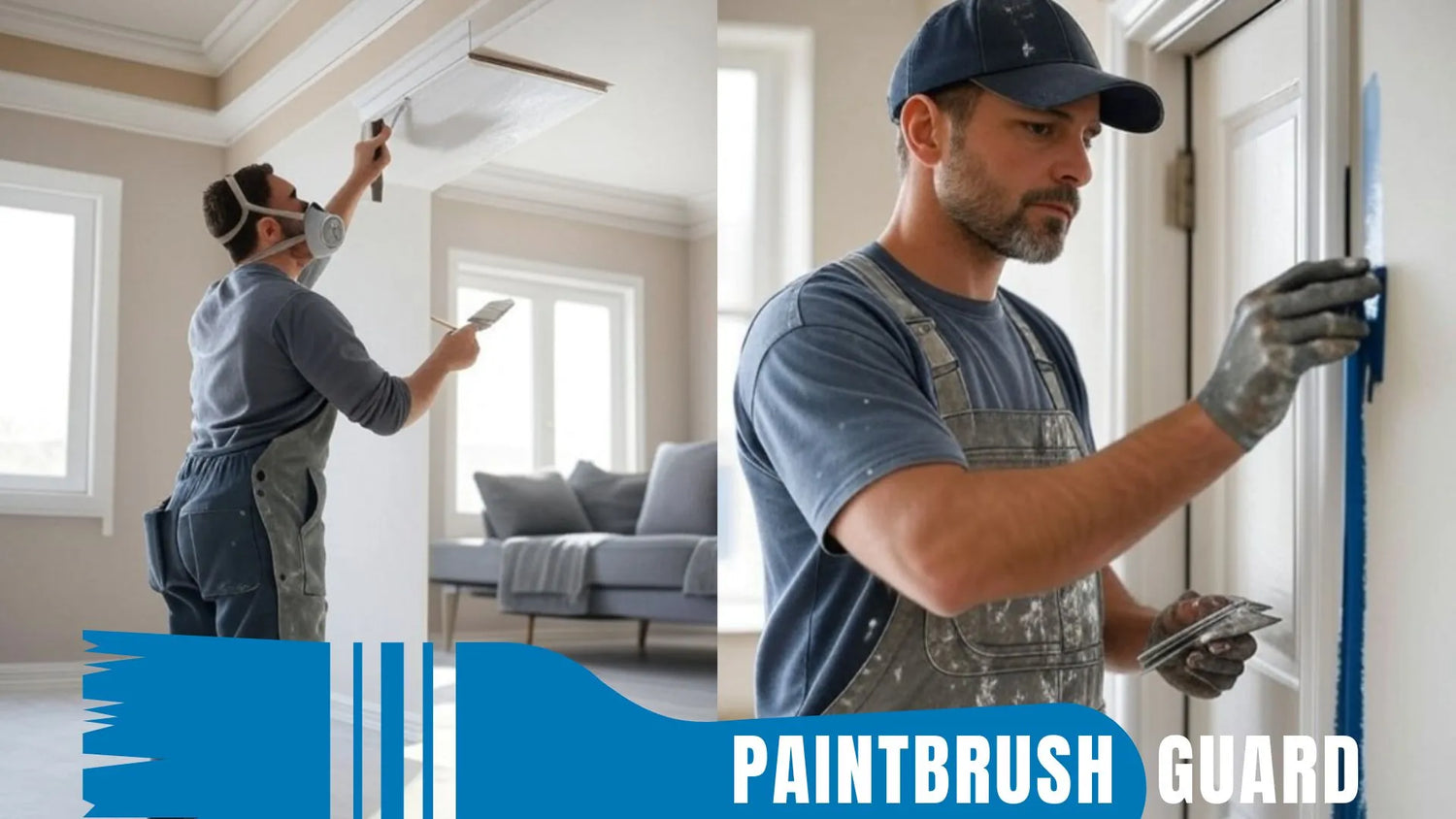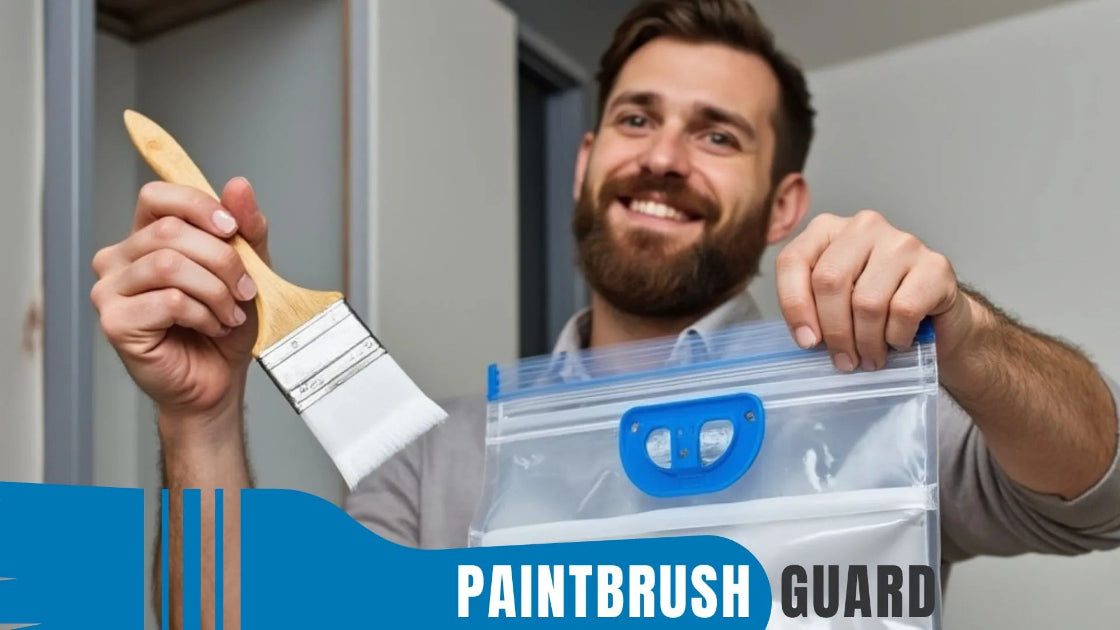
How to Clean a Paintbrush for Long-Lasting Use
|
Time to read 5 min
|
Time to read 5 min
Cleaning a paintbrush properly extends its life and ensures quality results for future projects, with specific methods for water-based and oil-based paints that are simple and cost-effective when done right.
With no cleanup required after a painting session, you can take a short break mid-project or wrap up your painting for the day, your brush stays ready without the need to clean.
Before cleaning, gather the right supplies. For water-based paints (latex or acrylic), you’ll need dish soap ($1–$5), a wire brush or comb ($2–$7), and warm water.
For oil-based paints, use paint thinner like mineral spirits ($5–$15 per quart) and a metal or glass container ($3–$10). Gloves ($5–$10) and rags protect your hands and workspace.
The Paintbrush Guard can keep brushes wet between sessions, reducing cleaning frequency.
This process takes 15 minutes and costs under $5 per cleaning, making it ideal for DIYers.
Click on this link to find house painting guides and innovative tools to help you with your home improvement painting project.
This takes 10–15 minutes and costs $5–$10 per cleaning, depending on thinner use. Work in a well-ventilated area, as advised by a 2023 OSHA report, to avoid fume inhalation.
The Paintbrush Guard simplifies cleaning by keeping brushes wet between sessions, reducing the need for immediate cleaning.
A 2024 PaintTalk survey found 60% of users reported less frequent deep cleanings with this tool, saving time and supplies.
For oil-based paints, it minimizes paint thinner exposure, enhancing safety.
Paintbrush Guard Benefits: Learn more about the benefits of Paintbrush Guard vacuum storage. Save time, reduce water waste, prevent chemical pollution and cut costs on supplies for house painting projects.
If a brush is heavily caked with dried paint or bristles are frayed, cleaning may not be worth it. Cheap brushes ($1–$3) are often better replaced, as cleaning can cost more in time and supplies.
A 2024 Home Improvement Research Institute survey found 55% of DIYers replaced low-quality brushes rather than cleaning them after heavy use. For quality brushes ($10–$20), proper cleaning extends life for 10–20 projects.
Learn more about Paintbrush Guard: This guide tackles the top 20 questions about storing paintbrushes, from quick breaks to long-term care, and even challenges like humid coastal areas.
Cleaning a paintbrush is straightforward with the right method, soap and water for water-based paints, paint thinner for oil-based paints.
By acting quickly, using proper supplies, and following safety precautions, you can keep brushes in top condition for years.
The Paintbrush Guard simplifies the process by reducing cleaning frequency, saving time and costs.
Whether you’re a DIYer or frequent painter, proper cleaning ensures your brushes deliver professional results every time.
To clean a paintbrush, you’ll need dish soap ($1–$5), a wire brush or comb ($2–$7), and warm water for water-based paints. For oil-based paints, gather paint thinner like mineral spirits ($5–$15 per quart), a metal or glass container ($3–$10), gloves, and rags. The Paintbrush Guard can reduce cleaning needs by keeping brushes wet, ensuring you have the right tools for cost-effective maintenance.
Wipe excess paint on the can’s rim or a rag, then rinse the brush under warm water to flush out paint. Apply dish soap or vinegar, working it into the bristles with your fingers or a wire brush. Rinse until the water runs clear, reshape the bristles, and dry flat or hanging. This 15-minute process, costing under $5, prevents bristle damage and keeps brushes ready for future projects.
Scrape off excess paint, then soak the brush in 2–4 ounces of paint thinner in a metal or glass container for 5–10 minutes. Scrub with a wire brush, dip in fresh thinner to remove residue, and wash with warm water and dish soap to eliminate thinner odor. Reshape and dry flat or hanging in a well-ventilated area. This 10–15 minute process ensures thorough cleaning for oil-based paint brushes.
The Paintbrush Guard vacuum-seals brushes to keep them wet between painting sessions, preventing paint from drying and reducing the need for immediate cleaning. This saves time and minimizes paint thinner use for oil-based paints, enhancing safety. Users report less frequent deep cleanings, making it an efficient tool for maintaining brushes during multi-day projects.
Replace a paintbrush if it’s heavily caked with dried paint or has frayed bristles, as cleaning may be too time-consuming or ineffective. Cheap brushes ($1–$3) are often not worth cleaning after heavy use, while quality brushes ($10–$20) can last 10–20 projects with proper care. For high-quality brushes, cleaning is worthwhile to extend their lifespan and maintain performance.

Learn about eco-friendly painting, tips and tutorials on house interior and exterior surfaces, so you can get started with your project without any surprices during or after your painting.

Learn how interior house paint colors influence mood with expert tips on room preference so you can pick the best colors for a harmonious home environment.
We focus on the most popular shades for each interior colors, so you don't miss no matter what color you pick.

Learn how this innovative tool allows you to store paintbrushes without the need for immediate cleaning, offering significant advantages in time savings, water conservation, reduced chemical pollution, and lower costs for supplies.
